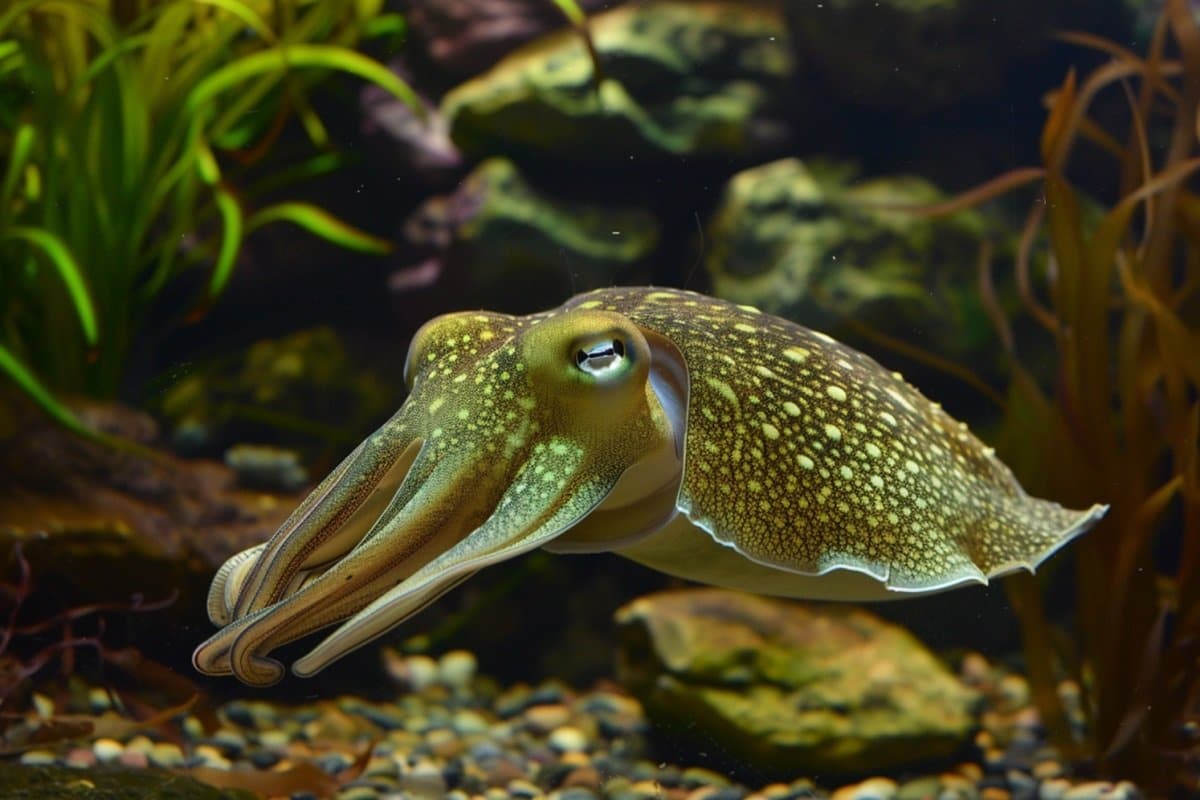Summary: Researchers have discovered that cuttlefish can form false memories, just like humans. By exposing cuttlefish to overlapping features during different events, they tricked the creatures into falsely remembering seeing shrimp where there were none.
This finding suggests that cuttlefish reconstruct memories from discrete details, thereby optimizing memory storage. Individual cuttlefish showed varying susceptibility to forming false memories, indicating differences in memory processing.
Highlights:
- Cuttlefish can form false memories by reconstructing distinct sensory details.
- The study used visual patterns and odors to trick cuttlefish into acquiring false memories.
- There was significant individual variation in susceptibility to false memories in cuttlefish.
Source: Cellular press
During an event, details such as what you saw, smelled, and felt are not stored in a single memory. Instead, they are encoded and stored in your brain separately. To retrieve that memory, those pieces need to be put back together. When this doesn’t happen in the right way or the details are distorted, it can lead to the creation of false memories.
The researchers now report their findings in the journal iScience On July 17, we have proof that the common cuttlefish can also create false memories.

“Forming false memories is different from making memory errors,” says Christelle Jozet-Alves of the University of Caen in Normandy, France.
The results suggest that cuttlefish do not encode events like film strips, but rather mentally reconstruct the event by associating different features that were present during the original event, Jozet-Alves says.
Cuttlefish are recognized as the only invertebrates with episodic memory. In other words, they can remember and recall what happened to them in the past. But the underlying mechanisms involved in their ability to remember past events were not known. Does cuttlefish memory for past events depend on a process of reconstruction?
To find out, Jozet-Alves and his colleagues decided to try to induce false memories in cuttlefish. If the animals rely on a reconstruction process for their episodic memories, they concluded, they should be susceptible to forming false memories.
To stimulate false memories, the researchers exposed the cuttlefish to successive events that shared many common features. They wanted to see if they could make the cuttlefish remember seeing their favorite food, shrimp, in a particular tube, even though they hadn’t. They first showed the cuttlefish different tubes, one containing shrimp, one a less-favorite crab, and one empty. Each tube featured a specific visual pattern.
Next, they showed two of the three tubes they had encountered previously: the shrimp tube and the empty tube, but this time the contents of the tubes were not visible. They tried to fool the animals with visual patterns and odors, creating superimposed features.
The question was whether cuttlefish would falsely remember the presence of shrimp in a tube that was actually empty because they saw that tube a second time in the presence of the shrimp tube.
To test this theory, they let the cuttlefish choose between the empty tube and the crab tube whose contents were not visible. Their choices suggested that the misleading information contained in these past events had altered their memories.
Rather than choosing a tube containing their less preferred crab, the cuttlefish sometimes chose an empty tube more often than expected, suggesting that they thought they remembered that it contained shrimp.
Although further study is needed, the results suggest that cuttlefish can form false memories for visual information, but not for odors. The researchers suggest that this memory strategy could reduce the cost of memory.
If cuttlefish can store smaller memory elements and then reconstruct them, this could optimize memory while allowing them to imagine different combinations of features in the future, the researchers suggest. However, they also noted an unexpected amount of variation between individuals.
“What is surprising is that the susceptibility to forming false memories seems to differ between individuals,” Jozet-Alves said.
“Some individuals appear unaffected by a deceptive event, while others develop false memories. This phenomenon is common in our own species, where this sensitivity varies between individuals and within individuals.”
In future studies, they say, it will be important to “better understand why not all individuals are equally susceptible to forming false memories and whether this might change within an individual depending on their age, level of attention to the task, or even emotional state.”
About this Memory Research News
Author: Christophe Bench
Source: Cellular press
Contact: Kristopher Benke – Cellular Press
Picture: Image credited to Neuroscience News
Original research: Free access.
“False memories in cuttlefish” by Christelle Jozet-Alves et al. iScience
Abstract
False memories in cuttlefish
Strong points
- Episodic memory in cuttlefish relies on reconstructive processes
- Misleading visual events impair memory retrieval ability, creating false memories
- 80% of cuttlefish remember a previous event when not misled
Summary
Episodic memory is a process of reconstruction for himself:when an event occurs, the features that compose it are encoded and stored separately in the brain, and then reconstructed when the memory of the event is retrieved. Even with source monitoring processes (e.g., did I see it or did I feel it?), some errors can occur.
These mnemonic errors occur especially when different events share several characteristics, which produces overlaps that are difficult to distinguish and leads to the creation of false memories. The common cuttlefish has the ability to remember specific events about what happened, where and when, namely episodic type memory.
To determine whether this memory, like human episodic memory, relies on reconstructive processes, we developed a protocol that promotes the formation of false memories.
Our results suggest that cuttlefish form false visual memories, but not false olfactory memories. These memory errors could be the first indication of the presence of reconstructive processes in cephalopod memory.